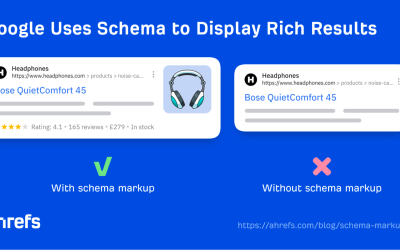Table of Contents
- 1 The Importance of Content in SEO
- 2 Creating High-Quality and Relevant Content
- 3 Building Authority and Expertise
- 4 Engaging and Retaining Users
- 5 Content Optimization for SEO
- 6 Content Promotion and Link Building
- 7 The Role of Content in Website Architecture
- 8 Content Updates and Freshness
- 9 The Role of Content in Mobile SEO
- 10 Measuring Content Performance in SEO
So you’ve heard the buzzwords “SEO” and “content” thrown around a lot, but what exactly is the role of content in SEO? Well, let me break it down for you.
In the ever-evolving world of search engine optimization, content plays a crucial role in determining the overall success of your website. It’s not just about stuffing keywords into your web pages anymore. Quality content that is relevant, informative, and engaging is what will help boost your website’s visibility on search engine results pages.
In other words, if you want your website to stand out in the vast sea of online content, you better pay attention to your content strategy.
The Importance of Content in SEO
When it comes to search engine optimization (SEO), content plays a crucial role in determining the success of a website. In fact, content and SEO are so closely intertwined that it is nearly impossible to have one without the other. Content is the fuel that drives organic search traffic to your website, helps build authority and expertise, engages and retains users, optimizes your website for search engines, promotes your brand through link building, shapes your website’s architecture, and enhances its mobile performance. Understanding the relationship between content and SEO is vital for achieving online visibility and driving organic traffic to your website.
The Relationship Between Content and SEO
Content and SEO have a symbiotic relationship. While SEO focuses on optimizing your website to rank higher in search engine results, content provides the information, value, and relevance that search engines and users are looking for. Without high-quality, relevant, and well-optimized content, your SEO efforts will be in vain. On the other hand, without proper SEO optimization, your high-quality content may go unnoticed by search engines, resulting in low organic traffic and visibility.
Why Content is Crucial for SEO Success
Content is the backbone of SEO. Search engines like Google strive to provide users with the most relevant and valuable content for their searches. By creating high-quality content that aligns with user intent, you can increase your chances of ranking higher in search engine results and attracting organic traffic to your website. Moreover, content allows you to target specific keywords and optimize your website for better search engine visibility. Without well-crafted and optimized content, it becomes incredibly challenging to improve your website’s SEO rankings and achieve online success.
The Role of Content in Driving Organic Search Traffic
One of the primary goals of SEO is to drive organic search traffic to your website. Organic traffic refers to the visitors who find your website through unpaid search engine results. Content is the driving force behind attracting organic traffic. By publishing valuable, informative, and engaging content that aligns with user intent, you increase the likelihood of your website appearing higher in search engine results. Furthermore, search engines place a high emphasis on content when determining the relevance and quality of a website. Thus, creating high-quality and SEO-friendly content enhances your website’s visibility, resulting in more organic traffic.
How Content Impacts Search Engine Rankings
Search engine rankings directly influence your website’s visibility and organic traffic. Content has a significant impact on search engine rankings, and the better the content, the higher your website’s chances of ranking well. Search engines assess various factors when determining search rankings, such as relevancy, user experience, and authority. Well-optimized content that meets these criteria can significantly improve your website’s search engine rankings. By creating content that resonates with your target audience, incorporating relevant keywords, and ensuring good user experience, you can boost your website’s rankings and attract more organic traffic.
Creating High-Quality and Relevant Content
The Importance of Creating High-Quality Content
Creating high-quality content is essential for SEO success. Search engines prioritize websites that provide valuable and relevant content to users. High-quality content demonstrates expertise, authority, and credibility, which, in turn, can lead to higher search engine rankings and increased organic traffic. High-quality content should be well-researched, informative, engaging, and written in a clear and concise manner. By consistently publishing high-quality content that addresses the needs and interests of your target audience, you can establish your website as a reliable and trustworthy source of information, driving organic traffic and improving SEO rankings.
How to Create Relevant Content
Creating relevant content is crucial for SEO as it helps attract and engage your target audience. To create relevant content, you need to understand the needs, interests, and pain points of your target audience. Conducting thorough research, analyzing trends and popular topics in your industry, and identifying keyword opportunities can help shape the relevancy of your content. It’s important to regularly update your content strategy to ensure it aligns with the changing needs of your audience and the evolving search landscape. By continually producing relevant content, you can capture the attention of your target audience, drive organic traffic, and improve your website’s SEO performance.
The Role of Keywords in Content Creation
Keywords are an integral part of content creation and SEO. Keywords are the terms and phrases that users enter into search engines when looking for information. Integrating relevant keywords into your content helps search engines understand the purpose and relevance of your website. However, it’s essential to strike a balance between keyword optimization and providing a good user experience. Keyword stuffing or over-optimization can harm your website’s rankings and deter users from engaging with your content. Implementing a strategic keyword research and optimization strategy can help you create content that ranks well in search engine results while also providing value to your audience.
Balancing Keyword Optimization with Good User Experience
While keywords are crucial for SEO, it’s equally important to prioritize user experience when creating content. Search engines aim to provide the best user experience by delivering relevant and valuable content. Therefore, your content should be informative, engaging, and easy to read. Strive for clarity, and write for your audience rather than solely for search engines. By maintaining a balance between keyword optimization and good user experience, you can create content that satisfies both search engines and users, resulting in improved SEO rankings and increased organic traffic.
Building Authority and Expertise
Why Authority and Expertise Matter in SEO
Building authority and expertise is vital for SEO success. Search engines prioritize websites that are considered authoritative and trustworthy sources of information. When your website is recognized as an authority in your industry, it not only earns higher search engine rankings but also attracts more organic traffic and builds credibility with your audience. Establishing authority and expertise signals to search engines and users that your content is reliable, valuable, and relevant. By consistently producing high-quality and informative content, you can position your website as an authoritative source, boosting your SEO rankings and driving organic traffic.
How Content Contributes to Building Authority
Content plays a significant role in building authority and expertise. By consistently producing high-quality and well-researched content, you can establish your website as a reliable and knowledgeable source of information. When other websites and users find your content valuable, they are more likely to link back to your website, share your content on social media, and cite your content as a reference. These external signals of credibility and trustworthiness contribute to building authority in the eyes of search engines. Additionally, authoritative content attracts more engagement, comments, and social shares, further enhancing your website’s reputation and authority.
The Role of Informative and Well-Researched Content
Informative and well-researched content is essential for building authority and expertise. When your content provides valuable information, insights, and solutions to the problems your audience faces, it positions your website as a trusted source of knowledge. Thorough research, accurate data, and credible sources strengthen the credibility of your content. By investing time and effort into creating informative and well-researched content, you can establish your expertise, attract inbound links, and enhance your website’s authority, resulting in improved SEO performance and increased organic traffic.
Using Content to Showcase Expertise and Knowledge
Content provides an avenue to showcase your expertise and knowledge in your industry. By creating content that offers unique perspectives, in-depth analysis, and thoughtful insights, you can position yourself as an expert and thought leader. This expertise can be demonstrated through various content formats, such as blog articles, whitepapers, case studies, videos, podcasts, and infographics. Consistently providing valuable and authoritative content helps build trust with your audience and establishes your website as a go-to resource. By leveraging content to showcase your expertise and knowledge, you can enhance your SEO performance, attract organic traffic, and differentiate yourself from competitors.
Engaging and Retaining Users
How Content Engages Users
Engaging content is essential for capturing and retaining the attention of your website visitors. Engaging content refers to content that is interesting, valuable, and relevant to your target audience. It should spark curiosity, evoke emotions, and encourage interaction. By creating content that resonates with your audience and meets their needs, you can capture their attention, increase their time on your website, and foster a positive user experience. Engaging content can take various forms, such as entertaining blog posts, interactive quizzes, visually appealing infographics, insightful videos, and thought-provoking podcasts. By consistently producing engaging content, you can establish a strong connection with your audience, drive organic traffic, and improve your website’s SEO performance.
The Importance of User Experience in SEO
User experience is a crucial factor in SEO. Search engines aim to deliver the best possible user experience by ranking websites that offer valuable and engaging content. User experience encompasses various elements, including website loading speed, mobile-friendliness, intuitive navigation, and relevant and well-structured content. By providing a positive user experience, you can increase user engagement, decrease bounce rates, and improve your website’s search engine rankings. Engaging content plays a significant role in enhancing user experience as it keeps visitors on your website for longer periods, encourages interaction, and fosters a positive impression of your brand.
The Role of Compelling Headlines and Introductions
Compelling headlines and introductions are essential for capturing the attention of your audience and enticing them to click on your content. The headline is the first impression users have of your content, and it can significantly impact their decision to read further. A compelling headline should be clear, concise, and evoke curiosity or offer a solution to a problem. Similarly, the introduction should hook the reader and provide a glimpse of the value they can expect from the content. By crafting attention-grabbing headlines and introductions, you can increase click-through rates, engage users, and improve your website’s SEO performance.
Methods for Increasing User Engagement
Increasing user engagement is a goal for every website owner. Engaged users are more likely to interact with your content, stay on your website for longer durations, and convert into customers or loyal followers. There are various methods you can employ to increase user engagement. First and foremost, creating valuable and relevant content that meets the needs and interests of your audience is paramount. Additionally, incorporating multimedia elements such as images, videos, and infographics can enhance user engagement. Encouraging social sharing, providing a platform for user-generated content, and implementing interactive features like polls, quizzes, and comments can also increase user engagement. By continuously striving to create content that resonates with your audience and implementing engagement strategies, you can drive organic traffic, improve SEO rankings, and establish a loyal user base.
Retaining Users Through Valuable and Engaging Content
Retaining users is just as important as attracting them. Once a user lands on your website, it is crucial to provide them with valuable and engaging content that keeps them coming back for more. By consistently producing high-quality and relevant content, you can build trust, establish authority, and foster a loyal user community. Understanding your audience’s needs, preferences, and pain points is essential for creating content that resonates and encourages repeat visits. Offering valuable resources, insightful guides, actionable tips, and regular updates can help retain users and increase their lifetime value. By focusing on retaining users through valuable and engaging content, you can establish a strong online presence, attract organic traffic, and improve your website’s SEO performance.
Content Optimization for SEO
The Basics of Content Optimization
Content optimization is the process of improving your website’s content to enhance its visibility and relevance in search engine results. By optimizing your content for search engines, you improve its chances of ranking higher and attracting organic traffic. Content optimization involves several factors, including keyword research and integration, on-page SEO elements, readability, and user experience. A well-optimized piece of content not only aligns with user intent but also satisfies search engine algorithms. By following best practices and implementing content optimization strategies, you can enhance your website’s SEO performance and drive more organic traffic.
The Role of On-Page SEO
On-page SEO refers to the optimization techniques applied directly to the content and HTML source code of a webpage. On-page SEO elements play a crucial role in improving your website’s visibility and search engine rankings. These elements include title tags, meta descriptions, header tags, URL structure, keyword usage, image alt tags, and internal linking. By optimizing these on-page elements, you can provide search engines with valuable information about your content, enhance user experience, and increase your website’s chances of ranking well in search engine results. On-page SEO, when combined with high-quality, relevant, and user-friendly content, can significantly improve your website’s organic traffic and SEO performance.
Optimizing Content for Keywords and Relevance
Optimizing your content for keywords and relevance is a fundamental aspect of content optimization. Keyword research is crucial for identifying the terms and phrases that your target audience is searching for. By incorporating these keywords naturally and strategically throughout your content, you improve its relevancy and visibility to search engines. However, it’s essential to avoid keyword stuffing and aim for a balanced and natural incorporation of keywords. Content optimization for keywords also involves optimizing meta tags, image alt tags, and header tags to provide relevant information to search engines. By conducting thorough keyword research and implementing strategic optimization techniques, you can improve your content’s visibility, attract more organic traffic, and enhance your website’s SEO performance.
Structuring Content for Readability and SEO
Structuring your content for readability and SEO is crucial for engaging your audience and satisfying search engine algorithms. A well-structured piece of content not only enhances user experience but also makes it easier for search engines to understand and categorize your content. When structuring your content, consider using headings and subheadings, bullet points, numbered lists, and short paragraphs to enhance readability. Organize your content in a logical and coherent manner to guide readers through the information. Additionally, ensure that your content is scannable and easy to skim. By structuring your content effectively, you can improve user experience, increase engagement, and improve your website’s SEO rankings.
The Importance of Meta Tags and Descriptions
Meta tags, including title tags and meta descriptions, play a vital role in content optimization. Title tags appear as the clickable headline in search engine results, while meta descriptions provide a concise summary of the page’s content. Optimizing title tags and meta descriptions with relevant keywords, engaging language, and accurate information can significantly impact your website’s visibility and click-through rates. These meta tags not only help search engines understand the purpose of your page but also attract users to click on your content. By creating compelling and relevant meta tags, you can improve your website’s SEO performance, increase organic traffic, and enhance user engagement.
Content Promotion and Link Building
Why Content Promotion is Necessary for SEO
Content promotion is essential for SEO because it helps increase the visibility, reach, and authority of your content. While creating high-quality and optimized content is a crucial step in improving your website’s SEO performance, it is not enough to rely solely on organic search to drive traffic. Content promotion involves actively sharing and marketing your content to expand its reach and attract more users. By promoting your content through various channels, such as social media, influencers, and outreach, you can increase its visibility, gain backlinks, and drive more organic traffic to your website. Content promotion is a strategic approach to leverage your content’s potential, enhance its SEO impact, and achieve online success.
The Role of Link Building in SEO
Link building is an integral part of SEO and plays a significant role in improving your website’s visibility and authority. When other websites link to your content, it signals to search engines that your content is valuable, informative, and trustworthy. Backlinks act as “votes of confidence” for your content and website, enhancing your SEO rankings and attracting more organic traffic. However, it’s important to focus on quality over quantity when building links. High-quality and authoritative links from reputable sources carry more weight and have a more positive impact on your SEO performance. By implementing a strategic link building plan and producing valuable content, you can earn backlinks, enhance your website’s authority, and drive more organic traffic.
Using Content as a Link-Building Strategy
Content can serve as a powerful tool for link building. By creating valuable, informative, and shareable content, you increase the likelihood of other websites linking back to your content. When your content provides unique insights, data, or solutions to common problems, it becomes a valuable resource for others to reference. Incorporating external and internal links in your content can also contribute to building links. External links to authoritative sources add credibility to your content, while internal links help users navigate your website and increase engagement. By consistently producing high-quality and link-worthy content, you can attract organic backlinks, improve your website’s authority, and enhance your SEO performance.
Creating shareable content is crucial for content promotion and link building. Shareable content is content that resonates with your audience and compels them to share it with others through social media, email, or other channels. When your content is widely shared, it increases its visibility and reach, driving more organic traffic to your website. Shareable content often evokes emotions, provides practical value, or offers unique perspectives. It can be entertaining, educational, inspirational, or thought-provoking. By understanding your audience’s preferences and needs, you can create shareable content that encourages engagement and amplifies your SEO efforts.
Promoting Content Through Social Media, Influencers, and Outreach
Promoting your content through social media, influencers, and outreach is crucial for maximizing its visibility and reach. Social media platforms provide a vast audience that can help amplify your content and attract more organic traffic. By strategically sharing your content on relevant social media channels and engaging with your audience, you can increase its exposure and encourage sharing. Influencers, who have a significant following and influence within your industry, can help broaden your content’s reach and gain exposure to a new audience. Collaborating with influencers for content promotion can attract more organic traffic and build valuable backlinks. Outreach involves reaching out to relevant websites, bloggers, and journalists to introduce your content and potentially earn backlinks and mentions. By utilizing social media, influencers, and outreach strategies, you can effectively promote your content, enhance its SEO impact, and attract organic traffic.
The Role of Content in Website Architecture
How Content Impacts Website Architecture
Content plays a significant role in shaping the architecture of a website. Website architecture refers to the structure and organization of a website, including its pages, menus, navigation, and overall layout. Content is the primary component that drives the organization and structure of a website. Each piece of content, such as blog posts, articles, product pages, and landing pages, contributes to the overall structure and hierarchy of the website. When content is well-organized and easily accessible, it enhances user experience and improves website navigation. Additionally, search engines rely on the organization and structure of your content to understand the relevance and value of your website. By creating a well-structured website architecture, you can optimize your content’s visibility, improve user experience, and enhance SEO performance.
The Importance of Organizing Content Effectively
Organizing content effectively is essential for user experience and SEO. Proper organization ensures that your content is easily accessible, navigable, and logically structured. Effective content organization involves categorizing content into relevant topics, creating clear menus and navigation, and implementing an intuitive search functionality. By organizing your content effectively, users can easily find the information they are looking for, resulting in a positive user experience. Moreover, search engines can crawl and index your content more efficiently, improving your website’s visibility and search rankings. By prioritizing content organization, you can enhance user engagement, drive organic traffic, and improve your website’s SEO performance.
The Role of Internal Linking in SEO
Internal linking refers to linking from one page on your website to another page on the same domain. Internal links facilitate navigation, help search engines crawl and index your content, and establish the hierarchy and structure of your website. Content plays a crucial role in internal linking as it provides the anchor text and context for the internal links. By strategically incorporating internal links in your content, you can guide users to related or relevant content, increase engagement, and improve user experience. Additionally, internal linking allows search engines to discover and understand your website’s content better, improving its visibility and search rankings. By implementing a strategic internal linking strategy, you can create a cohesive website structure, enhance user navigation, and boost your website’s SEO performance.
Content can significantly improve site navigation and user experience. When your content is well-structured, organized, and easily accessible, users can navigate your website more efficiently and find the information they are searching for. Clear menus, intuitive search functionality, and relevant internal links can all contribute to a positive user experience. By creating content that addresses your audience’s needs, incorporating a user-friendly design, and optimizing your website’s navigation, you can enhance site navigation and make it easier for users to engage with your content. Improved site navigation leads to increased user engagement, decreased bounce rates, and improved SEO performance.
Content Updates and Freshness
The Value of Updating and Refreshing Content
Updating and refreshing content is crucial for maintaining a relevant and valuable website. Over time, content can become outdated, inaccurate, or less valuable to users. By regularly updating and refreshing your content, you ensure its accuracy, relevance, and reliability. When users find up-to-date and fresh content on your website, they are more likely to engage with it, trust your brand, and share it with others. Additionally, search engines favor fresh content as it demonstrates that your website is active and consistently providing valuable information. By investing time and effort into updating and refreshing your content, you can attract more organic traffic, improve user engagement, and enhance your website’s SEO performance.
The Role of Fresh and Up-to-date Content in SEO
Fresh and up-to-date content is essential for SEO success. Search engines prioritize websites that consistently provide valuable and relevant content to users. By regularly updating and adding new content, you signal to search engines that your website is active, credible, and worth ranking higher in search engine results. Fresh content attracts more organic traffic, encourages user engagement, and increases the chances of earning backlinks. It also provides an opportunity to target new keywords, capitalize on trending topics, and stay ahead of your competition. By incorporating fresh and up-to-date content as part of your SEO strategy, you can strengthen your website’s visibility, attract more organic traffic, and improve your search rankings.
Methods for Regularly Updating Content
Regularly updating content requires a systematic approach and ongoing commitment. There are several methods you can employ to ensure that your content remains relevant and up-to-date. First and foremost, conduct regular content audits to identify outdated or underperforming content that needs updating. Update statistics, data, and information to maintain accuracy and reliability. Follow industry trends, news, and changes to identify opportunities for fresh content creation. Consider repurposing existing content into new formats, such as videos, infographics, or podcasts, to appeal to different audiences. Finally, encourage user-generated content, such as comments and reviews, to keep your content dynamic and engaging. By implementing a proactive approach to regularly updating your content, you can provide ongoing value to your audience, improve user experience, and enhance your website’s SEO performance.
Utilizing Evergreen and Cornerstone Content
Evergreen and cornerstone content are valuable assets in your content strategy that can significantly impact your website’s SEO performance. Evergreen content refers to timeless and ever-relevant content that remains valuable to users over an extended period. It tackles fundamental topics in your industry that do not go out of date. By creating evergreen content, you provide a valuable resource that continues to attract organic traffic, engage users, and earn backlinks. Cornerstone content, on the other hand, represents the most important and comprehensive content on your website. It serves as a hub of information and covers broad topics in great depth. Cornerstone content establishes your website as an authoritative source, attracts organic traffic, and contributes to your website’s SEO rankings. By strategically utilizing evergreen and cornerstone content, you can provide lasting value to your audience, enhance SEO performance, and improve the overall efficiency of your content strategy.
The Role of Content in Mobile SEO
Why Mobile Optimization is Essential for SEO
Mobile optimization is essential for SEO due to the increasing prevalence of mobile devices in online searches. With the majority of users accessing the internet through their smartphones and tablets, search engines prioritize websites that provide a seamless mobile experience. Mobile optimization involves designing and optimizing your website to be responsive across different screen sizes, load quickly on mobile devices, and offer an intuitive user interface. By ensuring that your content is mobile-friendly, you can improve user experience, increase engagement, and enhance your website’s SEO rankings. Ignoring mobile optimization can result in a poor user experience, high bounce rates, and lower search engine rankings.
The Impact of Content on Mobile Rankings
Content has a significant impact on mobile rankings. Search engines evaluate the relevance, quality, and user experience of content when determining mobile rankings. Mobile-friendly content that offers value, engages users, and loads quickly on mobile devices is more likely to rank higher in mobile search results. Additionally, mobile search algorithms prioritize content that is easy to read, scannable, and provides concise answers to user queries. By optimizing your content for mobile devices, you can improve your website’s mobile rankings, attract more organic traffic, and enhance user engagement.
The Role of Mobile-Friendly Content
Mobile-friendly content is essential for delivering a positive user experience on mobile devices. Mobile-friendly content should adapt to different screen sizes and load quickly, ensuring that users can access information efficiently. It should be easy to read, scannable, and provide clear answers to user inquiries. Additionally, mobile-friendly content should avoid intrusive interstitials, excessive ads, or elements that hinder user experience on smaller screens. By creating content that is specifically tailored for mobile devices, you can enhance user satisfaction, increase engagement, and improve your website’s mobile SEO performance.
Creating Responsive and Easily Readable Content
Creating responsive and easily readable content is key to providing a seamless mobile experience. Responsive design ensures that your content adapts to different screen sizes and resolutions, offering a consistent experience across devices. It involves using flexible layouts, font sizes, and media elements that adjust automatically to fit the screen. Additionally, creating easily readable content involves using concise sentences, clear headings, bullet points, and short paragraphs. By structuring your content for easy consumption and optimizing it for responsive design, you can improve user experience, increase engagement, and enhance your website’s mobile SEO performance.
Mobile-Specific SEO Practices
Mobile-specific SEO practices are necessary to optimize your website for mobile devices. These practices involve focusing on mobile-specific ranking factors, such as page speed, mobile-friendly design, and user experience. Ensuring that your website loads quickly on mobile devices, optimizing images and media files, and minimizing unnecessary scripts or code can significantly improve your mobile SEO performance. Additionally, implementing schema markup, optimizing meta tags for mobile display, and providing clear CTAs for mobile users can enhance your website’s mobile rankings. By adopting mobile-specific SEO practices, you can optimize your content for mobile devices, attract more organic traffic, and improve your overall SEO performance.
Measuring Content Performance in SEO
The Importance of Measuring Content Performance
Measuring content performance is essential for understanding the impact of your content on SEO and identifying areas for improvement. Without measuring and analyzing the performance of your content, it becomes challenging to assess its effectiveness, optimize strategies, and make informed decisions. Measuring content performance provides valuable insights into user behavior, engagement metrics, conversion rates, and the overall impact of your content on organic traffic. By tracking and analyzing key performance indicators (KPIs), you can identify successful content, uncover opportunities for improvement, and refine your content strategy to achieve better SEO results.
The Role of Analytics in Assessing Content Success
Analytics play a crucial role in assessing the success of your content. Web analytics tools, such as Google Analytics, provide valuable data and metrics that help you understand how users interact with your content. Analytics can reveal information about user behavior, including pageviews, time on page, bounce rates, and conversion rates. By analyzing these metrics, you can identify which content is performing well, what topics resonate with your audience, and what content may need improvement. Additionally, analytics can provide insights into website traffic sources, user demographics, and user journeys, helping you optimize your content and SEO strategies. By leveraging analytics to assess content success, you can make data-driven decisions, refine your content approach, and improve your website’s SEO performance.
Key Metrics for Evaluating Content Effectiveness
Several key metrics can help evaluate the effectiveness of your content and its impact on SEO. These metrics provide insights into user engagement, visibility, and conversion rates. Some essential metrics to consider include pageviews, unique pageviews, time on page, bounce rates, exit rates, conversion rates, social shares, and backlinks. Pageviews and unique pageviews indicate how many times your content has been viewed, while time on page measures how long users spend engaging with your content. Bounce rates and exit rates reveal the percentage of users who leave your website without interacting further. Conversion rates indicate the proportion of users who perform a desired action, such as making a purchase or signing up for a newsletter. Social shares and backlinks demonstrate the reach and impact of your content beyond your website. By analyzing these key metrics, you can assess the effectiveness of your content, identify areas for improvement, and optimize your SEO strategies.
Using Data to Improve and Optimize Content
Data-driven decision-making is crucial for improving and optimizing your content for SEO. By analyzing the data collected from website analytics, keyword research tools, and social media insights, you can gain valuable insights into user behavior, preferences, and trends. This data can help you identify content gaps, uncover new keyword opportunities, and refine your content strategy. By understanding what types of content resonate with your audience, you can create more valuable and engaging content, attract organic traffic, and improve your website’s SEO performance. Regularly analyzing and using data to inform your content decisions allows you to stay ahead of the competition, optimize your SEO efforts, and drive long-term success.
In conclusion, content plays a vital role in SEO and is crucial for achieving online visibility, driving organic traffic, and improving search engine rankings. Content and SEO have a symbiotic relationship, with well-crafted and optimized content significantly enhancing SEO performance. By creating high-quality and relevant content, focusing on building authority and expertise, engaging and retaining users, optimizing content for SEO, promoting content and building links, shaping website architecture, updating and refreshing content, improving mobile SEO, measuring content performance, and utilizing data-driven insights, you can leverage the power of content to maximize your website’s SEO impact and achieve long-term success in the digital landscape.














